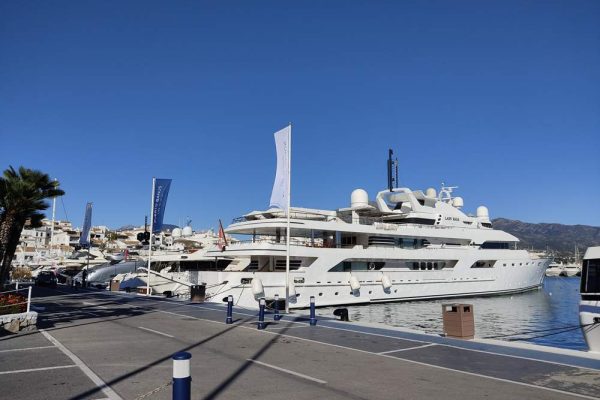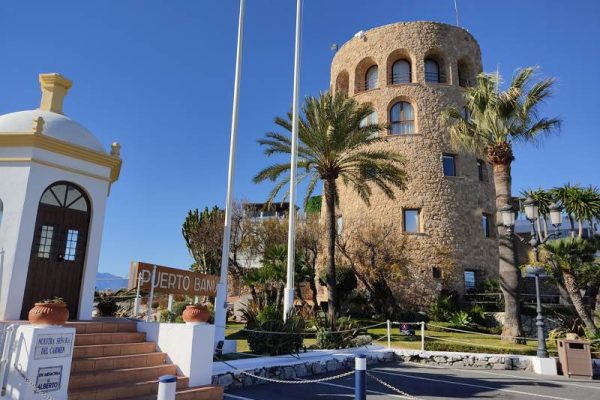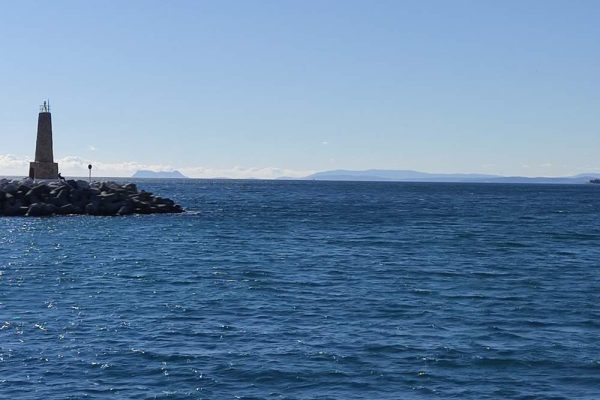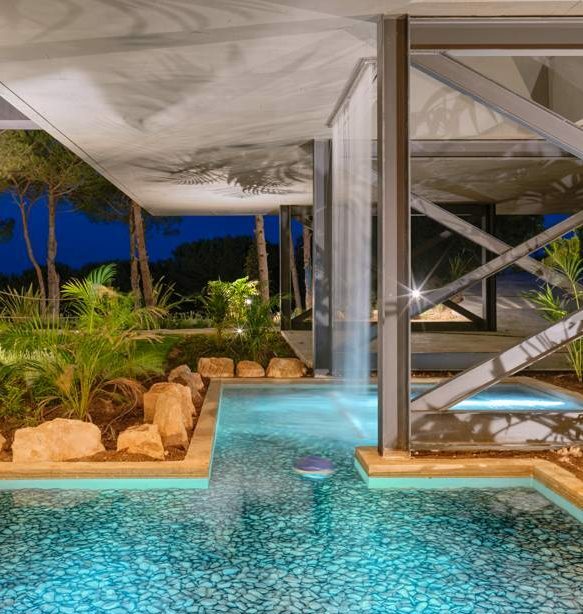Discover the Beauty and Charm of Marbella on the Costa del Sol
Marbella, located on the Costa del Sol, is a charming Spanish coastal town that combines sun, sea, sand, a rich cultural heritage, and world-class gastronomy. In this definitive guide, we will take you on a journey to discover the hidden treasures of Marbella and its surroundings.
We will explore its stunning beaches, from the serene oasis of Playa de Nagueles to the extensive Playa del Cable. Additionally, we will uncover the historical charm of the Old Town and enjoy panoramic views from the iconic mountain peak of La Concha. Don’t miss the opportunity to delight your senses with the delicious gastronomy of Marbella at renowned restaurants such as El Lago and Casa Fernando. Get ready for an unforgettable journey in this Spanish paradise.
The Beaches of Marbella: Where Relaxation Meets Luxury
Marbella, a city located on the Mediterranean coast of Andalusia, is famous for its luxurious lifestyle. The city offers a variety of stunning beaches, each with its unique charm and tranquility. Whether you’re looking for a serene oasis surrounded by lush greenery or a beach for endless strolls, Marbella has it all.
Playa de Nagueles: A Serene Oasis Surrounded by Lush Greenery
If you’re looking for a peaceful getaway, Playa de Nagueles is the perfect destination. Located in Marbella’s Golden Mile, this idyllic beach is surrounded by greenery, providing a tranquil and natural atmosphere. The shallow waters are perfect for swimming, while the peaceful surroundings and fine sand make it an ideal spot for sunbathing.
For those seeking adventure, Playa de Nagueles also offers water sports such as jet skiing and paddleboarding. The beach also features a variety of restaurants and beach clubs, providing the perfect setting to enjoy a refreshing drink or a delicious meal while taking in the stunning views of the Mediterranean Sea.
Playa del Cable: An Extensive Beach for Endless Strolls
Playa del Cable is one of Marbella’s longest beaches, stretching over 4 kilometers. Located near the city center, it is easily accessible on foot or by public transportation. Its fine golden sand, crystal-clear waters, and breathtaking views make it a favorite among tourists and locals alike.
The extensive beach is perfect for a relaxing walk or a jog by the sea. You can also take advantage of the many beach activities, such as beach volleyball or water sports. There are plenty of bars and restaurants along the promenade, where you can enjoy delicious seafood or have a refreshing cocktail.
Marbella’s beaches offer something for everyone, from luxurious beach clubs to peaceful spots. Whether you’re looking for a place to relax and unwind or a day full of adventure, Marbella’s beaches will not disappoint.
Around Marbella: Hidden Treasures and Breathtaking Views
Marbella is a vibrant city on the Costa del Sol that offers visitors a unique combination of history, culture, and stunning natural beauty. From its golden beaches and crystal-clear waters to its charming Old Town and iconic mountain peak, La Concha, Marbella has something for everyone. In this article, we will explore two of Marbella’s hidden treasures that offer breathtaking views and unforgettable experiences.
Old Town of Marbella: A Charming Stroll through History
The Old Town of Marbella, located in the heart of the city, is a charming and picturesque area steeped in history. Surrounded by ancient city walls, the Old Town features narrow streets lined with whitewashed houses adorned with traditional wrought-iron balconies and blooming plants. As you stroll through the streets, you’ll discover hidden squares and plazas filled with lively cafes, art galleries, and boutique shops.
The center of the Old Town is the picturesque Plaza de los Naranjos. This lively square is surrounded by outdoor cafes and restaurants and is filled with fragrant orange trees, providing a charming and relaxing atmosphere for visitors to enjoy. From here, take a walk down the nearby Calle del Taller, an ancient street known for its craft shops selling ceramics, leather goods, and other traditional crafts.
For those interested in history, the Old Town also houses several significant landmarks, such as the beautiful 16th-century Church of the Incarnation, the Corregidor’s House, and the remains of the Moorish castle. Marbella’s Old Town is a must-visit destination for anyone looking to experience the authentic charm and history of this beautiful city.
La Concha: Ascend the Iconic Mountain Peak with Panoramic Views
La Concha, or “The Shell,” is an iconic mountain peak that rises above the city of Marbella. With its distinctive shape and breathtaking panoramic views, La Concha is a must-visit destination for hikers and nature lovers. The mountain peak reaches an altitude of 1200 meters and offers stunning views of the entire coastline, Gibraltar, and the African continent on clear days.
To reach La Concha, hikers can follow the well-marked trail that starts at the Refugio de Juanar, located a short drive from the city center. The trail is challenging, but the breathtaking views and the sense of accomplishment make the effort worthwhile. Along the way, you’ll pass through pine forests, rocky formations, and crystal-clear streams, all while enjoying impressive panoramic views of the surrounding landscape.
At the top, you’ll be rewarded with stunning views of Marbella and the sea, making La Concha one of the most spectacular viewpoints on the Costa del Sol. La Concha is the perfect destination for those looking to venture off the beaten path and experience the natural beauty of Marbella.
In conclusion, Marbella is a stunning destination that offers visitors a unique combination of history, culture, and natural beauty. Whether you want to explore the charming Old Town or ascend to the top of La Concha, Marbella has something to offer everyone. So start planning your next adventure in this beautiful Spanish paradise today.
Gastronomy of Marbella: A Delicious Journey through Local Delights
If you’re a food lover, Marbella is your dream destination. Its gastronomy will take you on a journey through the flavors and aromas of Andalusia. Here are some places you must visit to taste the delicious local delights:
El Lago Restaurant: A Michelin-Star Culinary Experience
For an exceptional culinary experience, head to El Lago Restaurant. This Michelin-starred restaurant is located in a unique setting, surrounded by a beautiful lake that enhances the atmosphere. Its carefully crafted dishes showcase local ingredients and flavors that will take your taste buds to another level. The tasting menu is highly recommended, as it provides a true gastronomic adventure.
Casa Fernando: The Local Favorite for Traditional Andalusian Tapas
When it comes to traditional Andalusian tapas, Casa Fernando is the place to go. This cozy and authentic restaurant is a local favorite and offers a glimpse into the culture and gastronomy of the region. Expect to find tapas classics such as fried fish, gazpacho, and Iberian ham, all prepared to perfection. The ambiance is lively and casual, perfect for a relaxing evening with friends or family.
Marbella is not just a food lover’s paradise but also a city full of history, culture, and natural beauty. Located on the Costa del Sol, Marbella boasts an impressive coastline, with 24 urban and semi-urban beaches to choose from. The Old Town of the city is a must-visit, with its charming streets and historical landmarks such as Plaza de Los Naranjos, the ancient city walls, and the Church of the Incarnation.
Additionally, sports enthusiasts will find plenty of activities to keep them busy, from golf and tennis to hiking and water sports. The Puerto Banús Marina is a hub of luxury tourism, with high-end shops, restaurants, and some of the world’s largest and most expensive yachts.
To reach Marbella, you can fly into Malaga Airport, which is approximately 45 minutes away. Once there, you can travel by bus, rental car, or taxi to explore everything the city has to offer.
Marbella’s unique blend of beauty, culture, and gastronomy makes it a top tourist destination for those seeking an unforgettable experience. Don’t miss the opportunity to discover this Spanish paradise and everything it has to offer.
Frequently Asked Questions about Marbella, Spain
What is life like in Marbella?
If you’re looking for a luxurious lifestyle in Marbella, you won’t be disappointed. This Spanish city is located on the Costa del Sol and offers everything from stunning beaches to world-renowned restaurants and high-end shops.
The climate in Marbella is a major draw for many, with warm temperatures year-round and plenty of sunshine. This makes it a popular destination for those seeking a Mediterranean climate. Additionally, the city boasts a vibrant nightlife scene, with many bars and nightclubs catering to the international crowd.
Marbella is also home to several high-end golf courses, attracting golfers from around the world. The city is known for its prestigious marina, Puerto Banús, where you can spot luxury yachts and vehicles, and find some of the most exclusive designer shops and restaurants.
Although Marbella is undoubtedly a luxury destination, it is also home to many permanent residents, some of whom have lived in the city for decades. This means there is a strong local community and many cultural events throughout the year.
Marbella offers a high-end lifestyle with plenty of activities to keep you busy, whether you’re interested in fine dining or playing golf. With its Mediterranean climate, stunning beaches, and glamorous atmosphere, it’s easy to see why it’s a popular destination for those seeking the good life.
Is Marbella a town or a city?
Marbella is a beautiful city located on the southern coast of Spain, in the province of Malaga, and is known worldwide for its luxurious lifestyle, stunning beaches, and vibrant nightlife. However, Marbella is not just for the rich and famous. Marbella Pueblo, also known as the “Old Town,” is the historic heart of the city and offers a glimpse into its traditional Andalusian roots.
Marbella Pueblo is characterized by its narrow, winding streets, whitewashed buildings adorned with colorful flowers, and lively squares filled with charming cafes and restaurants. The center of Marbella Pueblo is the Plaza de los Naranjos, which is surrounded by orange trees and lined with historic buildings, including the Town Hall and the Church of Our Lady of the Incarnation.
The streets of Marbella Pueblo are perfect for exploring on foot, and there are many shops selling everything from handmade crafts to designer clothing. There are also several museums and art galleries, such as the Ralli Museum, which features an impressive collection of Latin American art.
One of the highlights of a visit to Marbella Pueblo is the Castillo de Marbella, a 10th-century Moorish castle perched atop a hill overlooking the city. Visitors can climb to the top of the castle to enjoy panoramic views of Marbella and the surrounding coastline.
Marbella Pueblo also has several beaches, including the popular Playa de la Fontanilla and Playa del Faro, which are just a short walk from the city center. These beaches offer crystal-clear waters, soft golden sand, and all the amenities needed for a relaxing day by the sea.
Marbella Pueblo is a charming and historic city that offers visitors a glimpse into traditional Andalusian life. Its winding streets, lively squares, and stunning views make it a must-visit destination for anyone traveling to the Costa del Sol.
How long should I visit Marbella?
Marbella is a charming city located in the heart of the Costa del Sol in southern Spain. It is known for its luxurious lifestyle, high-end shops, and beautiful beaches. If you’re planning to visit this stunning destination, you may be wondering how long you should stay to make the most of your trip.
For a quick visit: If you have limited time, you can explore the main attractions of Marbella in just a couple of days. Take a stroll through the charming streets of the Old Town, visit the Castillo de Marbella, and relax on the beautiful beaches. If you’re a golf enthusiast, you can also visit some of the many golf courses in the area.
For a one-week stay: If you have a bit more time, you can plan a one-week stay in Marbella and explore the region more in depth. Take a day trip to nearby Andalusian villages such as Ronda or Mijas, enjoy some tapas at a local restaurant, and indulge in shopping at the many boutiques and high-end shops in the area.
For a long-term vacation: If you’re looking to relocate or spend an extended period of time in Marbella, you can fully immerse yourself in Spanish culture and enjoy everything the region has to offer. You can take Spanish classes, explore the nearby beaches and nature reserves, and indulge in the local cuisine.
No matter how long you decide to stay in Marbella, you’re sure to fall in love with its charming atmosphere, vibrant nightlife, and stunning natural beauty. Start planning your trip today and experience the magic of this beautiful Spanish city.
Thank you for joining me on this journey as we discovered Marbella, the ultimate Spanish paradise. From the serene oasis of Playa de Nagueles to the extensive beach of Playa del Cable, Marbella’s beaches offer the perfect combination of relaxation and luxury. But Marbella has so much more to offer. Explore the charming history of the Old Town or ascend to the iconic mountain peak of La Concha for breathtaking views. And don’t forget to indulge in the gastronomic journey of Marbella, from El Lago Restaurant’s Michelin-star culinary experience to Casa Fernando’s traditional Andalusian tapas.
PLACES WE RECOMMEND VISITING:
– In the heart of the old town we find the Plaza de los Naranjos, which dates back to the end of the 15th century, and where we can see the Town Hall, the old Casa del Corregidor, and the Ermita de Santiago. In the historic centre we can still see the remains of the wall that surrounded the city in the Muslim period and the Arab castle.
–The Chapel of San Juan de Dios and the Chapel of Santo Cristo de la Vera Cruz, both from the 16th century, as well as the Church of La Encarnación from the 17th-18th century.
– The Museum of Contemporary Spanish Engraving, with works by Picasso, Miró, Tapies and Chillida, among others.
–The Cortijo Miraflores Cultural Centre. This mansion was built in 1704. Nowadays we can highlight in it, the Archaeological exhibition, the Oil Museum, part of the Municipal Archive, mainly the historical collection, as well as several rooms for conferences and Exhibitions. The remains of a cave hermitage whose origin dates back to between the 8th and 10th centuries and the remains of ovens were discovered just behind this building.
–The Ralli Museum, dedicated to the diffusion of Latin American and European contemporary art.
–The Avenida del Mar where you can admire a collection of sculptures cast in bronze by Bonvicini and designed by Salvador Dalí.
–The Archaeological Sites, such as the Paleo-Christian Basilica of Vega del Mar, in San Pedro de Alcántara, the remains of the Roman Villa of Río Verde, in Nueva Andalucía, the Roman Baths of Las Bóvedas in Guadalmina or the six Almenara Towers located along the coastline of Marbella.
–Aventura Amazonia Marbella. The largest adventure park in Andalusia, and one of the leading theme parks on the Costa del Sol. It has 6 adventure circuits and includes the largest zip line between trees in Andalusia with a length of 240 metres.
– Puerto Banús. Puerto José Banús, better known as Puerto Banús, is a luxury marina, one of the most important in the world. If you visit Marbella and you like nautical sports, you cannot miss it. Many of those who visit stay in the area.




